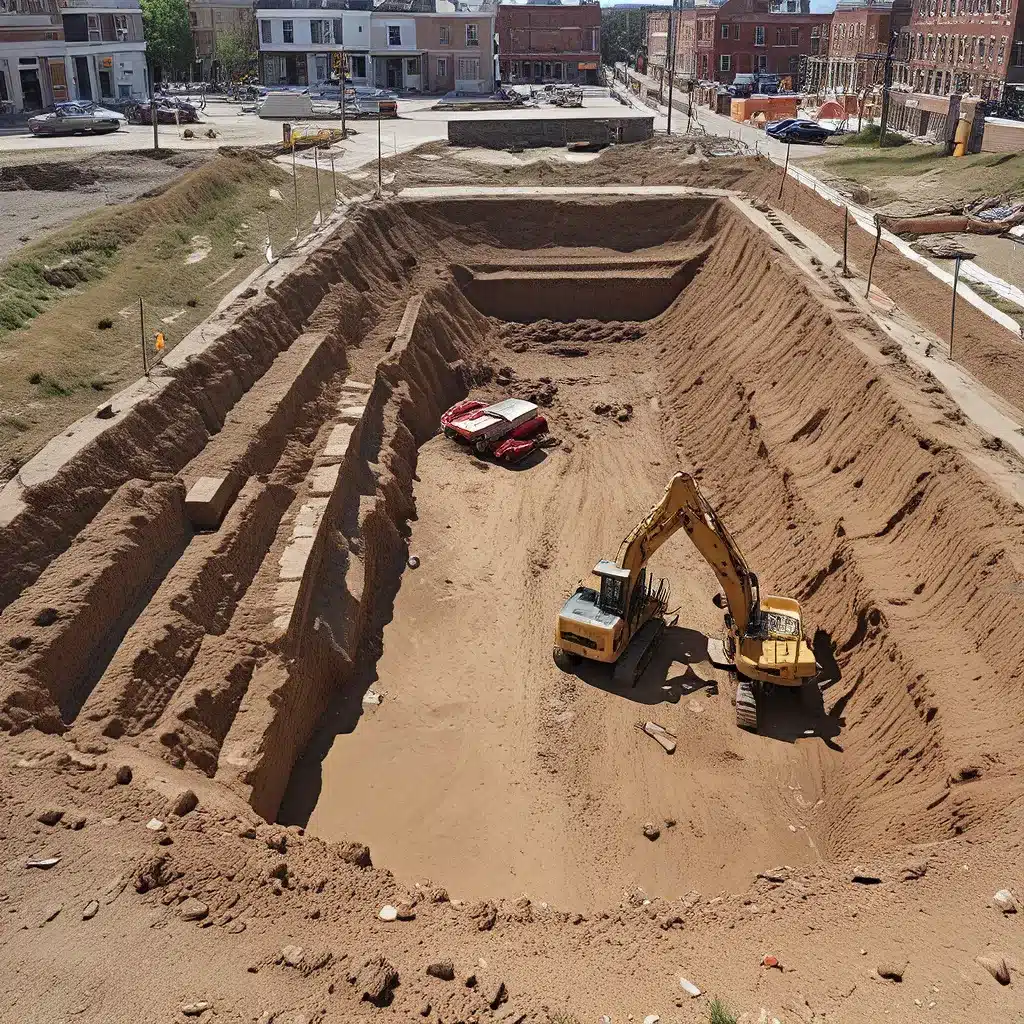
As I delve into the world of environmental remediation, I can’t help but feel a sense of excitement and curiosity. The idea of transforming contaminated sites into thriving, productive spaces is nothing short of captivating. It’s like unearthing hidden treasures, uncovering the past to build a brighter future.
The Remediation Puzzle
When it comes to site remediation, I’ve learned that it’s not as straightforward as simply digging up the dirt and calling it a day. No, it’s a complex puzzle, with layers of regulations, scientific analysis, and community involvement that all come together to create a sustainable solution.
The Remediation and Redevelopment Division (RRD) of the Michigan Department of Environment, Great Lakes, and Energy (EGLE) plays a crucial role in this process. They oversee the cleanup and revitalization of contaminated properties, ensuring that the land is safe for future use, whether it’s for residential, commercial, or industrial purposes.
One of the key aspects of their work is the Environmental Remediation program, which aims to address the legacy of environmental contamination left behind by past industrial activities. Imagine a once-thriving factory now sitting idle, its soil and groundwater tainted by decades of chemical spills and improper disposal. The RRD steps in to tackle these challenging sites, working tirelessly to identify the extent of the contamination and develop a plan to remove or contain the hazardous materials.
The Importance of Community Involvement
But the RRD’s work doesn’t stop there. They understand that site remediation is not just a technical exercise – it’s a community-driven endeavor. Community involvement and public participation are essential parts of their mission, vision, and values. They recognize that the people who live and work in these affected areas have a deep stake in the outcome, and they make it a priority to engage with them every step of the way.
Imagine a neighborhood that has been burdened by the legacy of industrial pollution for years. The RRD would work closely with the community, listening to their concerns, answering their questions, and involving them in the decision-making process. After all, these are the people who know the land best, and their input is invaluable in shaping the future of their community.
Navigating the Regulatory Landscape
Of course, site remediation is not just about community engagement – it’s also about navigating a complex web of regulations and permits. EGLE’s Permits Overview outlines the various permits and approvals that may be required, depending on the nature and scope of the project.
It’s a delicate balance, ensuring that the cleanup effort adheres to all the necessary guidelines while also maintaining the trust and support of the community. But the RRD is up to the challenge, drawing on their deep expertise and collaborative approach to guide projects through the regulatory maze.
Harnessing Technology for Data-Driven Decisions
Technology also plays a crucial role in the RRD’s work. The GeoWebFace application, for example, is a powerful tool that allows the RRD to track and manage contaminated sites throughout Michigan. By compiling and analyzing vast amounts of data, they can make more informed, data-driven decisions about the best course of action for each site.
But it’s not just about the numbers – the RRD also leverages the Inventory of Facilities and the data exchange to share information and collaborate with other stakeholders. After all, site remediation is not a solo endeavor; it requires a coordinated effort among various government agencies, private organizations, and community members.
Tackling Complex Challenges
As I delve deeper into the world of site remediation, I’m struck by the sheer complexity of the challenges involved. It’s not just about cleaning up the contamination – it’s about understanding the intricate web of social, economic, and environmental factors that have led to the problem in the first place.
Take the case of the former Waste Control site in Bellevue, Western Australia. After a devastating fire in 2001, the site was found to be contaminated with a range of hazardous materials, including volatile organic compounds and heavy metals. The risk of these contaminants reaching the nearby Helena River was a major concern, and the RRD had to act quickly to contain the damage and prevent further environmental harm.
But the story doesn’t end there. The RRD had to navigate a complex web of regulations, engage with the local community, and coordinate with various stakeholders to develop a comprehensive remediation plan. It was a delicate balancing act, but they persevered, implementing innovative solutions like permeable reactive barriers to halt the flow of groundwater contaminants.
The Rewards of Redevelopment
As I reflect on the RRD’s work, I can’t help but be inspired by the transformative power of site remediation. It’s not just about cleaning up the past – it’s about unlocking the potential for a brighter future.
Just imagine a once-contaminated site being transformed into a thriving industrial park, a bustling commercial hub, or a vibrant residential community. The Bellevue remediation project is a prime example, with the site now being prepared for future industrial use, restoring economic vitality and creating new opportunities for the local community.
It’s a powerful reminder that the work of the RRD and organizations like Inland Waters isn’t just about cleaning up the past – it’s about shaping the future. By excavating the secrets of the land, they’re paving the way for new possibilities, new growth, and new hope.
So, as I continue to explore the world of site remediation, I can’t help but feel a sense of awe and admiration for the tireless efforts of the RRD and their partners. They’re not just problem-solvers – they’re visionaries, transforming the landscape one site at a time and proving that the past and the future are inextricably linked.


